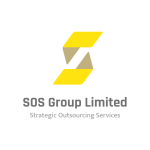What is Application Modernization?

Application Modernization is the practice to update or rebuild your legacy application to fit in nowadays system architecture with a cloud-native approach.
Application Modernization is not just rebuilding the application language, framework or library. We are not just updating the JDK from 8.0 to 11.0, it will also require updating the architecture design by applying cloud platform services. For example, we could consider using Azure App Service to replace the on-premises Tomcat server to enhance the SLA and scalability for the application.
Modernization Approach

Application Modernization can have several approaches according to different applications: Cloud native, Migrate, Modernize, Replace and Stay on-prem.
Cloud Native
Cloud Native is the most common approach when developing a new application nowadays. In the development stage, we would already be considering using different cloud native services such as Azure App Service, Serverless function like Azure Functions or SQL Database service. Using cloud native services can leverage the benefit of cloud platform, high scalability, availability and productivity.
Next time when planning to develop a new application, remember to consider using different cloud services to enjoy the advantage of cloud native.
Migrate
For migration, sometimes we would call it “Lift & Shift”. Usually, it means migrating an on-premises server to the cloud platform by using IaaS service namely Azure VMs, Managed Virtual Disks or Virtual Network. In some cases of application modernization, we would “Migrate first, Modernize later”. This is because not every legacy app could be modernized at once without any effort or changes.
Most of the time, we need to do a detailed assessment of the application to consider whether it would be suitable for migration or modernization directly. If the result shows that modernizing the application at once would need a lot of resources and time, we might suggest to migrate the application to cloud platform first. To save cost and compatibility immediately, and of course, enjoy the benefit of cloud native. Migrating your application could lead to a faster time to the market, enhance the productivity and improve the development cycle.
Modernize
In a cloud platform, modernizing our application can enjoy the platform benefit as much as you can. By using container services like Azure Kubernetes Service(AKS) and PaaS like Azure Web App, the existing daily use application could be running on a different computing approach with the cloud native technologies.
For app modernization, you would need to consider which technology approach fits your application, are there any code changes for modernization and the time effort or cost needed for the whole plan.
Replace
Sometimes the legacy application may not be able to migrate or need a lot of effort to modernize, we may consider to replace it by develop another application. With cloud platform like Azure you could decrease the time of development by using SaaS or Low code solutions like PowerAutomate, Logic Apps or Power Apps. Those tools could help us to build app in ease to lower the time to market.
Stay On-Premises
Last but not least, some applications may not be suitable for modernizing or migrating to cloud platform, and the company also doesn’t have enough resources to rewrite the application. Then we may consider staying some of the applications within the whole system on-premises but connecting the necessary part to the cloud. For example, some enterprises may serve their legacy application on a local machine for internal use due to the compliance and regulations. However, it would be better to use a cloud native database service to protect the data security, enhance the availability and scalability. In this case, we can connect the on-premises application to a cloud native database service for better performance and SLA.
The benefit of modernizing your legacy application
To conclude, we know the benefit of transforming your legacy application to fit with modern technology could help to improve the velocity and efficiency of your business and the challenges you are facing.
- Increase business agility, productivity and efficiency
- Enable cost-effective innovation
- Reduce the risk of legacy inefficiencies
- Improve development cycle
What’s next? – Data Modernization
Data source is important for an application, therefore, most of the time App Modernization will also come with data modernization. By migrating the data from on-premises data server like MS SQL Servers to the Azure SQL Database. We could provide more than 99.995% SLA and all the hardware maintenance fees can be carefree. In the next chapter, we will share more advantages of data modernization.
If you have any questions about the solution or would like to schedule a consultation with our expert team, please feel free to contact us at enquiry@soshk.com or call us at 3525 1828
Thank you for reading and see you in the next blog!

Eric Chan
Microsoft MVP
SOS Group Limited

